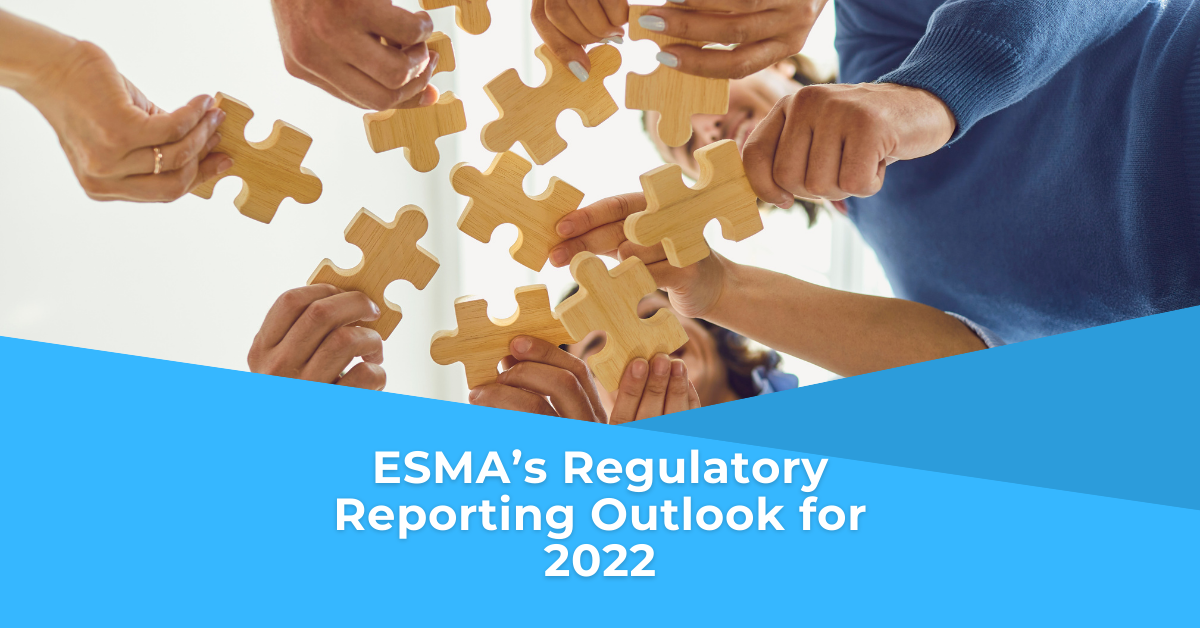Every year the European Securities and Markets Authority (ESMA) outlines its priorities for the following year in its annual work programme (AWP). With ESMA’s new powers and responsibilities, growth in staff numbers and changes in senior management, the AWP for 2022 was developed at a time of significant change for ESMA. The focus areas echo the regulatory body’s mission to enhance investor protection and financial stability in the European Union (EU).
What are the 2022 key areas of focus?
ESMA has listed the following key areas as its priorities for 2022:
- the exercise of existing and new supervisory powers for benchmarks, data service providers and central counterparties;
- its contribution to the EU priorities on the development of the Capital Markets Union, sustainable finance and innovation;
- the convergence of supervisory and regulatory practices across the EU;
- continuation of monitoring the impact of the Brexit on the evolution of EU and global capital markets; and
- reviews of MiFID II/MiFIR, the Short Selling Regulation, Central Securities Depositories Regulation, and other regulations.
This article will only focus on the MiFID II/MiFIR and EMIR reporting aspects of the AWP.
MiFID II/MiFIR
Following the list of reports on different MiFID II topics published in 2021 (see below) and the changes to MiFID II resulting from the recovery package, in 2022 ESMA will continue to carry out any new or follow-up work on MiFID II/MiFIR, including but not limited to:
- review/develop technical standards and provide advice to the European Commission;
- publish the annual report on MiFID II sanctions;
- monitor the developments in relation to retail trading activities due to digitalisation of financial markets and recent events of market high volatility on certain stocks;
- discuss with National Competent Authorities (NCAs) the importance of using the full range of supervisory and enforcement powers;
- work on the implementation of the new regulation on crowdfunding and crypto assets; and
- make decisions on product intervention and assess any measures proposed by National Competent Authorities.
Summary of relevant final reports published in 2021:
| Reports | Content summary |
| Review report on Algorithmic Trading | Reviews the impact of requirements regarding algorithmic trading (including high-frequency algorithmic trading) and review all related provisions with the aim of both simplifying the regime and making it more efficient. |
| MiFID II/MiFIR Annual Report 2021 | Confirms the change of the thresholds for the liquidity criterion ‘average daily number of trades’ for bonds in, as well as the change of the trade percentiles that are used to determine the size specific to the financial instruments (SSTI) for non-equity instruments. |
| MiFID II/MiFIR obligations on market data | Provides guidelines on the MiFID II/MiFIR obligations on market data to ensure a more consistent application of these obligations. |
| Review report on functioning of Organised Trading Facilities (OTF) | Reviews the functioning of OTF and contains proposals aiming at clarifying the related provisions to: ensure efficient EU market structures; enhance the level playing field between all EU firms; andreduce the level of complexity for market participants. |
| Review report on the obligations to report transactions and reference data | Provides the assessment result and recommendations on the functioning of the transaction reporting regime. |
Besides these reports, ESMA also published several consultation papers on various MiFID II/MiFIR topics to gather industry feedback, such as:
- Technical standards for commodity derivatives – MiFID II recovery package;
- Best execution reports;
- Annual RTS 2 review; and
- Retail investor protection.
EMIR
OTC Derivatives
Following the transition away from EONIA and LIBOR which will cease to exist, ESMA will continue to monitor the impact of the transition to new benchmarks in the OTC derivatives market. ESMA will also examine the effects of the new amendments to the clearing and trading obligations scope (which were introduced to reflect this transition), and review further the relevant regulatory technical standards (RTS) where necessary.
In 2022, ESMA will publish a Consultation Paper on the effectiveness of the regulatory framework regarding the EMIR clearing obligation of OTC derivatives in preparation for the next EMIR Review. The Consultation Paper should provide relevant guidance and risk mitigation technique requirements.
ESMA aims to achieve consistent implementation of EMIR and will initiate work on the production of the next annual report on supervisory measures and penalties imposed by NCAs regarding market participants’ compliance with EMIR.
CCPs
EMIR 2.2 took effect on 1 January 2020 and is primarily related to Central Clearing Parties (CCPs).
EU CCPs
EMIR 2.2 increased ESMA’s role in promoting supervisory convergence in the supervision of EU CCPs by creating and giving enhanced responsibilities to the CCP Supervisory Committee. Next year, ESMA may review the existing CCP-related requirements and develop new measures and guidelines with respect to the CCP Recovery and Resolution Regulation.
3rd country CCPs
EMIR 2.2 introduced a tiered system for the authorisation of 3rd country Central Clearing Parties (CCPs) based on the level of a CCP’s systemic important to the EU:
- Tier 1 – not systemically important; or
- Tier 2 – systemically important.
In the coming year, ESMA will ensure appropriate categorisation of the 3rd country CCPs, conduct ongoing supervision of Tier 2 CCPs, and address any systemic risk resulting from 3rd country CCPs deemed substantially systemic for the financial stability of the EU.
A lot has happened within the MiFID II/MiFIR and EMIR space. TRAction continues to monitor regulatory changes and will keep you informed with the latest.
If you have any questions, please feel free to contact our team.




